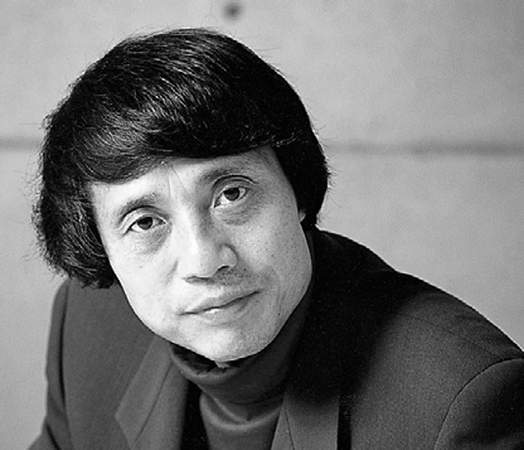Tadao Ando was born in 1941 in Osaka, Japan. He is a prolific architect and is in demand the world over. He designs buildings using his distinctive approach to architecture. His style uses simple forms, lots of exposed concrete, and the creative use of natural light. People describe his work as ‘international modernism’. A leading architectural critic said: "Ando is right in the Japanese tradition.”
1941年,安藤忠雄出生于日本大阪。他也是當今最為多產,最具影響力的世界建筑大師。他的建筑風格獨具一格。他的建筑風格非常簡約,再配有棱角分明的清水混凝土,以及自然光。人們將他稱之為“國際現代主義”大師。著名建筑評論家認為:“安藤忠雄很好的運用了日本傳統美學。”
Ando spent his childhood making wood models. He spent hours in a carpenter's shop across the street and learnt many techniques from the craftsmen. After leaving school he drifted from job to job. He was a truck driver and tried his luck as a boxer. He eventually got into architecture, even though he had no qualifications.
童年時期,他制作了許多木工模型。他會在街上的木工商店待上幾個小時,從木匠手里學習技藝。畢業之后,他頻繁換工作。他曾經是一名貨車司機和拳擊手。其后在沒有資格認證的情況下成為了一名建筑師。

Ando began teaching himself the principles of designing buildings. He visited temples and shrines in Kyoto and Nara to get a feel for traditional Japanese architecture. He also travelled to Europe to sketch the magnificent buildings there. His maiden project was Tomishima House in Osaka in 1973. Twenty years later he completed his first international project, the Japanese Pavilion at Expo92 in Sevilla, Spain.
安藤忠雄開始自學建筑理論。他前往了東京和奈良,探究那里的寺院和神廟,并尋找日本傳統建筑的創作靈感。他還曾前往歐洲,素描那里的偉大建筑。1973年,他的處女富島邸問世。20年后,他完成了自己的首個國際作品,西班牙塞維利亞世界博覽會的“日本政府館”。
Ando was first recognized for his work in 1979, when he won the Annual Prize from the Architectural Institute of Japan. In 1995, he scooped the Pritzker Prize, the highest distinction in world architecture. He donated the $100,000 prize money to the orphans of the Kobe earthquake. A housing complex he designed in Kobe survived the earthquake undamaged.
1979年,安藤忠雄獲得了日本建筑協會年度大獎,至此他的作品也得到了大家的認可。1995年,他榮獲了建筑界最高榮譽獎,普利茲克獎。他隨即向神戶大地震孤兒捐贈了10萬美金。在此次地震中,他在神戶設計的居住區完好無損。
譯文屬可可英語原創,未經允許,不得轉載。











